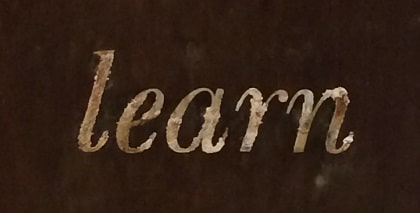Informal and Social Learning Through Curation
I’ve written before about the concept of curation. I define it as the ability to sift through the vast amounts of information available to us and find exactly what we’re looking for at the right moment. There’s so much available to us on the internet, it can be a challenge to find good sources of information. And in our busy lives, we don’t have unlimited time to find relevant information.
As business people, we have to learn how to curate. I like to think it’s similar to being a museum art curator. Our skill is putting together works of art from multiple sources in various mediums to convey a story. Now translate that to the corporate world. As business curators, our role is to find data and information from global sources that will help us achieve our goals.
What are those goals? A critical one is learning. We’re not talking formal training programs. Think everyday learning. The vast majority takes place either informally or socially. In order for us to effectively learn in this data overloaded society, we must be able to curate information.
We should view curation not only from the standpoint of where can we go to find good information (i.e. who are good curators for us) but also in terms of the information we need to gather ourselves. Possibly something unique we can’t find anywhere so we’ll curate it ourselves. Or something that can be found in other places but we want to put our own point of view on it.
Curation is different from aggregation. If a good museum curator uses art to tell us a story, a museum aggregator hangs a grouping of pictures and leaves us to figure it out on our own. Sometimes that’s a good thing. We want or need to figure it out on our own. But there are times when aggregation is nothing more than noise. This is why we need to understand curation. Otherwise, we won’t be able to realize the benefit.
At ASTD’s TechKnowledge Conference, I attended a session lead by Fujitsu Laboratories on curation learning. They shared how content curation was being used for organizational learning and their 3-step approach for learning curation:
1) Search – Learners decide the topics they wish to explore, search relevant sources, and select content.
2) Synthesize – Learners analyze the content and synthesize it by adding their point of view or context.
3) Share – Learners share their curated materials and comment on others curated materials.
The only way we will become skilled curators is to start breaking down curation skills into manageable pieces and find out what works best for ourselves, our networks, and our companies.
Image courtesy of HR Bartender
1